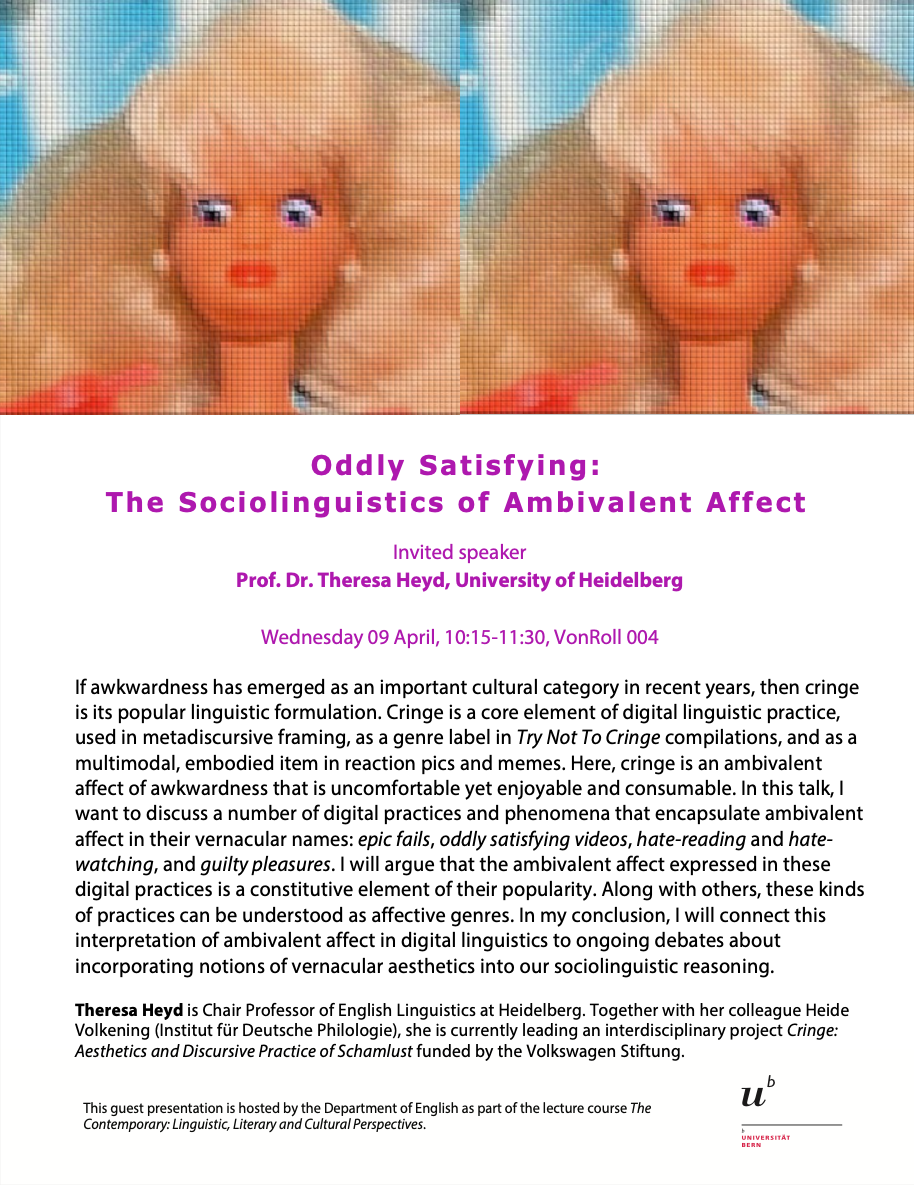
If awkwardness has emerged as an important cultural category in recent years, then cringe is its popular linguistic formulation. Cringe is a core element of digital linguistic practice, used in metadiscursive framing, as a genre label in Try Not To Cringe compilations, and as a multimodal, embodied item in reaction pics and memes. Here, cringe is an ambivalent affect of awkwardness that is uncomfortable yet enjoyable and consumable. In this talk, I want to discuss a number of digital practices and phenomena that encapsulate ambivalent affect in their vernacular names: epic fails, oddly satisfying videos, hate-reading and hate watching, and guilty pleasures. I will argue that the ambivalent affect expressed in these digital practices is a constitutive element of their popularity. Along with others, these kinds of practices can be understood as affective genres. In my conclusion, I will connect this interpretation of ambivalent affect in digital linguistics to ongoing debates about incorporating notions of vernacular aesthetics into our sociolinguistic reasoning.